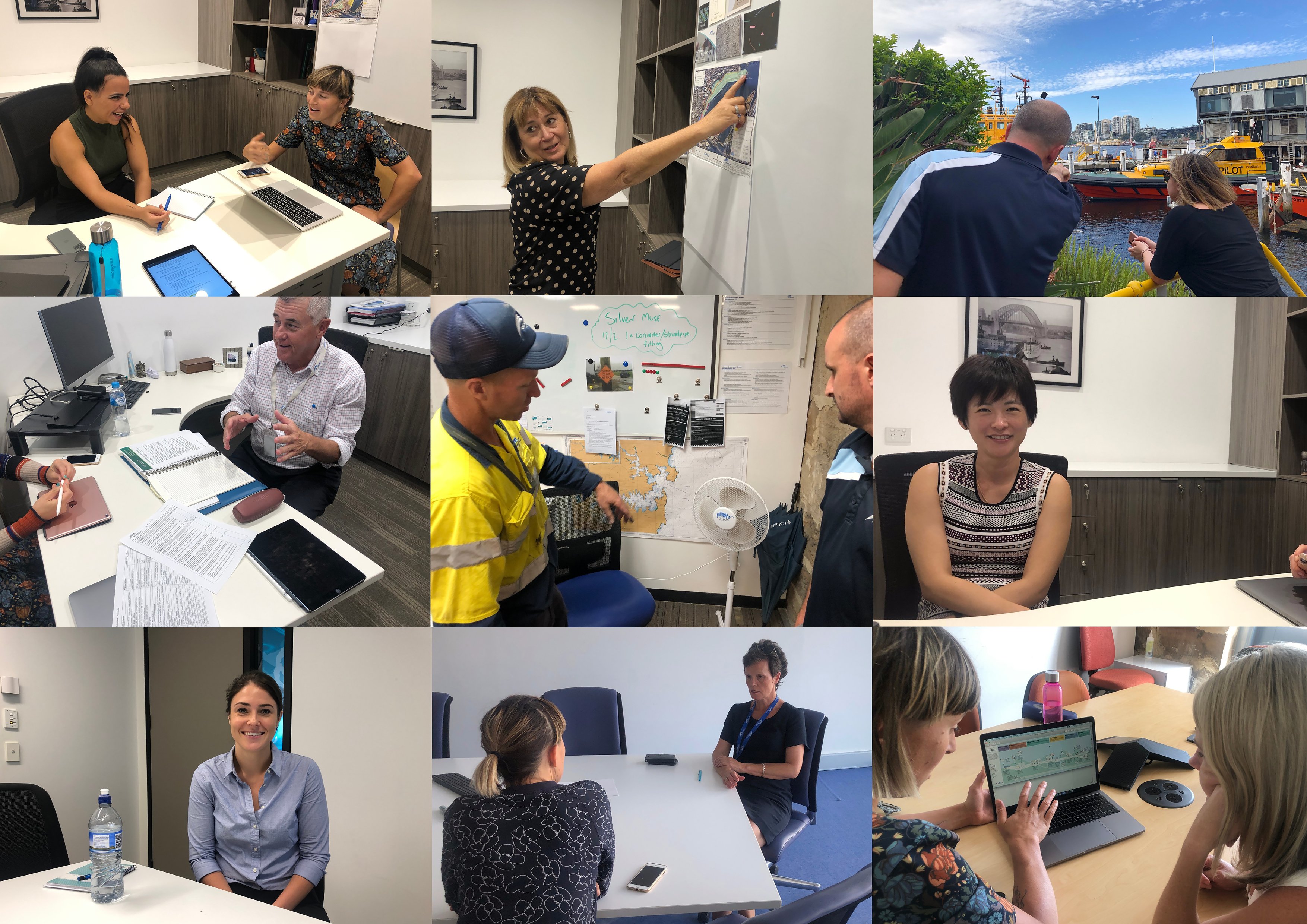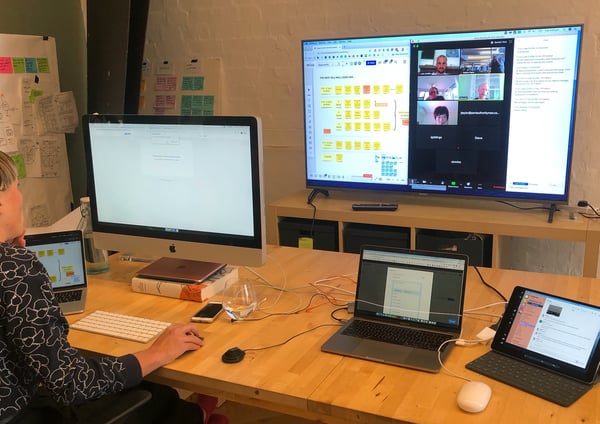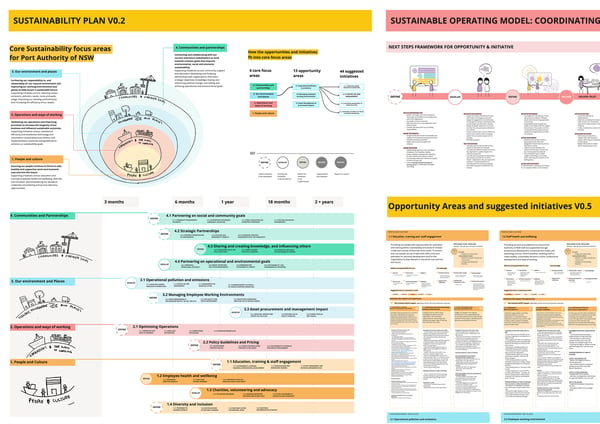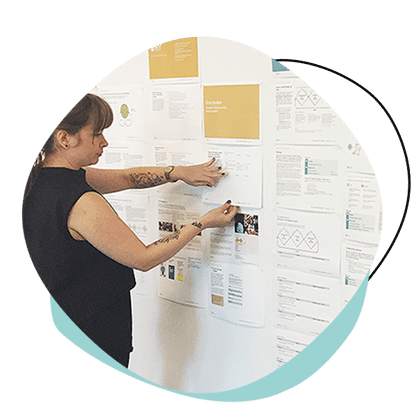DESIGNING BETTER ORGANISATIONS, TOGETHER
Co-creating Port Authority of NSW’s Sustainability Plan
A strategic plan for engaging with stakeholders to deliver better social, environmental and economic outcomes
Approach
Port Authority invested in staff and stakeholder collaboration upfront, with the goal of reducing implementation challenges and improving ownership and pride in the Plan.
The team used a range of engagement methods and digital collaboration tools to make the entire process possible and transparent to staff across NSW from Yamba to Eden. This included in-depth interviews using the Natural Inquiry research methodology, surveys, workshops, a digital project wall, regular showcases, and e-newsletters.
Almost 20% of staff (at all locations and representing a diversity of roles, experience and seniority), and key external stakeholders were actively engaged and participated in the co-creation of the Plan.

Using digital collaboration tools from the beginning enabled the team to maintain connection and productivity during COVID-19 lockdown. It also demonstrated Port Authority’s ability to collaborate remotely as a new norm.
This open, collaborative approach is an innovative way of working for Port Authority and an innovative approach to sustainability planning in general. For many organisations, sustainability planning results in a document describing high level goals with initiatives and targets, but does not delve into the organisational change required to embed sustainability and shift mindsets and behaviours.
“Initially I thought we were after a glossy PDF, but since undertaking the process, the real plan is to have our employees engaged, setting their own targets, and being able to achieve more than just our group could ever imagine.”
Amy Beaumont, Group General Counsel

Outputs
The resulting Sustainability Plan includes:
- 44 social, environmental, economic and organisational initiatives prioritised by staff across the organisation.
- A stakeholder engagement framework to help staff co-design and deliver initiatives together with communities and partners.
- An operating model for continuous planning, monitoring and transparent public reporting.
The plan will be published internally and externally in the coming months.

Outcomes
Embracing a design mindset and approach enabled Port Authority to create a Sustainability Plan that:
- Describes the collaborative journey it should go on to help ensure a positive legacy for future generations.
- Provides a roadmap and operating model for embedding sustainable practices and decision-making into its organisation.
- Inspires staff to act because they were actively involved in creating it.
- Demonstrates the open and accountable culture Port Authority aims to embed.
- Demonstrates digital ways of working, reducing Port Authority’s carbon footprint as a quick win and giving staff confidence that it can be done.
You can follow the progress of this initiative on the Port Authority website.
Related case studies

SERVICE DESIGN
Transport as a service in Sydney’s North West
We worked with customers and transport stakeholders to orchestrate how all modes of transport and mobility will come together as a service ecosystem to support behaviour change.

